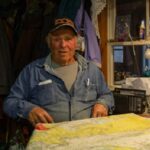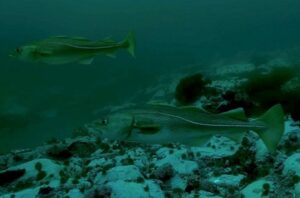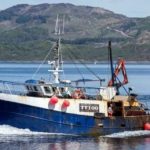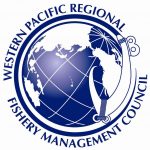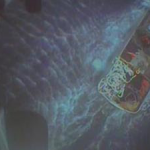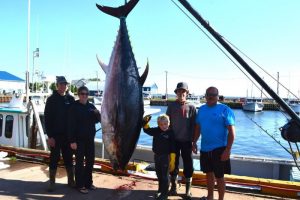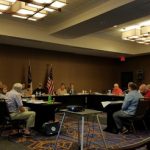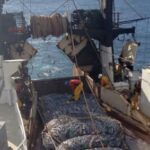Tag Archives: Placentia Bay

Newfoundland fisherman says DFO disregarded his 60-year fishing career
The small longliner June and Judy sits at the wharf in the sheltered inlet, awaiting the start of cod fishing season. Her owner, Winston Boutcher, can keep an eye on her from the window of his living room across the harbour. He knows this boat well. It’s a family legacy. The 28-foot fishing boat has been taking him to the cod grounds in Placentia Bay for many years. He and his brothers used to own her, equal partners in their inshore fishing enterprise. The Boutcher brothers remained equal in all things, until 1995. That year DFO adopted a policy that created two classes of fishing licences: core and non-core. >click to read< 14:59
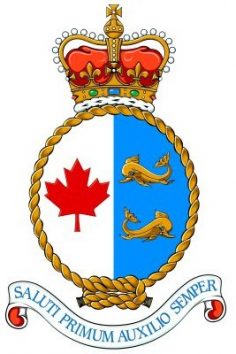
UPDATED- Search Underway. Breaking: 1 body found, 3 still missing in search for commercial fishermen near St. Lawrence
The Canadian Coast Guard has recovered the body of a fisherman off the coast of St. Lawrence, and crews are still searching for three other missing men. The four men went missing in the mouth of Placentia Bay, after leaving from St. Lawrence shortly after midnight to fish crab, and were due back before 8 p.m. Monday evening, but did not arrive. “We found some debris in the water, and obviously the crew member, so we know whatever happened is tragic and probably happened quickly,” said Mark Gould, the regional supervisor at the Maritime Rescue Sub Centre in St. John’s. “But, y’know, we’re still searching. We’ll search until we’ve exhausted all measures and possibilities.” >click to read< 09:58
Three others still missing, search and rescue efforts underway – “We’re in complete shock,” St. Lawrence’s assistant town clerk Eileen Norman,,, Her brother-in-law, Ed Norman, 67, went out in a 36-foot fishing boat with his son, Scott Norman, 35, and nephew, Jody Norman, 42. The other man, Isaac Kettle, is a friend in his early 30s, she said. >click to read<
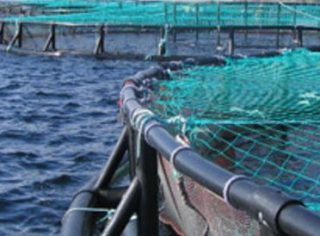
Harvesters Call for Better Consultation as Grieg Aquaculture Plans Expansion to Additional Sites
Fish harvesters are concerned about plans by Grieg Aquaculture to establish three additional sites east of Marasheen Island in Placentia Bay. The FFAW-Unifor is calling on the provincial government not to move forward with any project approval until they have pursued a proper consultation process with harvesters as the project may put their livelihoods at risk. Placentia Bay is a high-traffic area with the highest concentration of small fishing vessels during peak fishing times. Union president Keith Sullivan says previous consultations on the overall project have been insufficient, and information on site locations has been inconsistent. >click to read<12:30
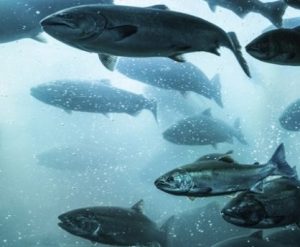
Russell Wangersky – Farmed Salmon: Left behind
It sometimes feels that we’re perpetually jumping onto a ship just about the same time as everyone else is abandoning it. And nowhere does it seem more like that than in the aquaculture business. As the plans steamroller ahead for a new massive Placentia Bay open pen Atlantic salmon project with the provincial government (and key regulator) fully onside, it’s hard to ignore that many others are moving in the other direction. In the state of Washington, a large-scale fish escape saw that state announce a ban on Atlantic salmon pen farming and a wind-down of existing operations. (The salmon aquaculture business in Washington is back under the microscope this month after 800,000 juvenile salmon had to be destroyed because they were found to be carrying a strain of Piscine orthoreovirus, which is dangerous for wild stocks of salmon.) >click to read<
Government will review Supreme Court order on $250M Placentia Bay project: minister
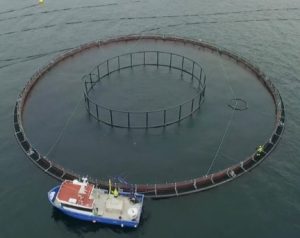 The Supreme Court of Newfoundland and Labrador on Thursday overturned the provincial government’s decision to release a quarter-billion dollar salmon farming project in Placentia Bay from further environmental assessment. Justice Gillian Butler ruled on July 20 that Perry Trimper, then the environment and climate change minister, “lacked jurisdiction” to release the project from a full environmental assessment, and that an environmental impact statement had to be completed. The impact statement would have required an ecosystem and population study of the wild salmon in Placentia Bay, as well as a contingency plan and extensive public consultation. click here to read the story 09:56
The Supreme Court of Newfoundland and Labrador on Thursday overturned the provincial government’s decision to release a quarter-billion dollar salmon farming project in Placentia Bay from further environmental assessment. Justice Gillian Butler ruled on July 20 that Perry Trimper, then the environment and climate change minister, “lacked jurisdiction” to release the project from a full environmental assessment, and that an environmental impact statement had to be completed. The impact statement would have required an ecosystem and population study of the wild salmon in Placentia Bay, as well as a contingency plan and extensive public consultation. click here to read the story 09:56
Hybrid green crab species threatens N.L. lobster – also eat clams, scallops and even each other
 They’re fearless. They can live for weeks out of the water. They will eat anything, even each other. “They were born ferocious,” said Cynthia McKenzie, a scientist with the Department of Fisheries and Oceans based in St. John’s. McKenzie is one of a group of researchers who have identified a species of green crab that is ravaging parts of Newfoundland’s south coast. Fishermen in Placentia Bay, on the southeast coast, first noticed green crab in 2007. “When a lobster spawns … the green crab is there to eat it,” said Clarence Marsh. “I think the green crab got a big effect on the lobsters, and that’s why there’s none here in this bay now.” The green crab are “numerous,” said Marsh, and they don’t stop at eating lobster. He has also found tiny green crabs inside scallop shells. Click here to read the story 10:42
They’re fearless. They can live for weeks out of the water. They will eat anything, even each other. “They were born ferocious,” said Cynthia McKenzie, a scientist with the Department of Fisheries and Oceans based in St. John’s. McKenzie is one of a group of researchers who have identified a species of green crab that is ravaging parts of Newfoundland’s south coast. Fishermen in Placentia Bay, on the southeast coast, first noticed green crab in 2007. “When a lobster spawns … the green crab is there to eat it,” said Clarence Marsh. “I think the green crab got a big effect on the lobsters, and that’s why there’s none here in this bay now.” The green crab are “numerous,” said Marsh, and they don’t stop at eating lobster. He has also found tiny green crabs inside scallop shells. Click here to read the story 10:42
Provincial investment ‘absolutely necessary’ for massive Placentia Bay $230-million aquaculture project
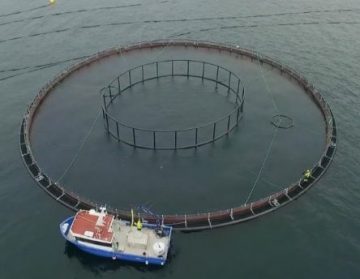 The companies behind a massive aquaculture project proposed for say government investment is “absolutely necessary,” but Fisheries and Aquaculture Minister Steve Crocker says the province will not be rushed into a decision. A spokesman for Grieg NL Nurseries and Grieg NL Seafarms told CBC News Thursday that an equity share in the $230-million project will be a “safe” investment for the province. “This is an excellent investment which will grow and pay the province back tenfold in both taxation and employment,” said Greig’s Perry Power.When asked if the project’s sanctioning hinges on an infusion of government money, Power said “my understanding has always been, in the position that I’m in, that the province’s involvement is absolutely necessary.” Grieg wants to construct the world’s largest salmon hatchery in Marystown, and create 11 “escape-proof” cage sites in Placentia Bay. Read the rest here 13:04
The companies behind a massive aquaculture project proposed for say government investment is “absolutely necessary,” but Fisheries and Aquaculture Minister Steve Crocker says the province will not be rushed into a decision. A spokesman for Grieg NL Nurseries and Grieg NL Seafarms told CBC News Thursday that an equity share in the $230-million project will be a “safe” investment for the province. “This is an excellent investment which will grow and pay the province back tenfold in both taxation and employment,” said Greig’s Perry Power.When asked if the project’s sanctioning hinges on an infusion of government money, Power said “my understanding has always been, in the position that I’m in, that the province’s involvement is absolutely necessary.” Grieg wants to construct the world’s largest salmon hatchery in Marystown, and create 11 “escape-proof” cage sites in Placentia Bay. Read the rest here 13:04
Letter: We’ve seen the future, and it’s land-based – John McCarthy
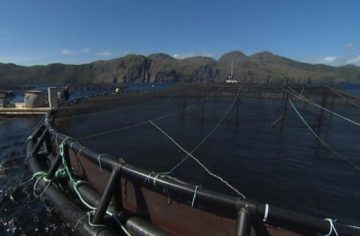 I write in response to a letter written by Leon Fiander from Marystown on Oct. 18, “Will Placentia Bay aquaculture affect native salmon?” Our group, Salmon Preservation Association for the Waters of Newfoundland (SPAWN), has met with Environment Minister Perry Trimper and provincial officials, executive director Mark Lane and other officials of the Newfoundland Aquaculture Industry Association, Gudie Hutchings, MP for Long Range Mountains, and others. We have tried to establish exactly what is being proposed for aquaculture in Placentia Bay. We have a good track record of meeting and working with industry to mitigate potential environmental issues and have worked out of the public eye with Kruger and other industries successfully over the years. We continue to correspond with Mark Lane regarding the interaction between aquaculture and our environment. Fiander’s letter appears to us to be more like a job application than an actual letter of approval for Placentia Bay sea-cage aquaculture. Read the rest here 12:08
I write in response to a letter written by Leon Fiander from Marystown on Oct. 18, “Will Placentia Bay aquaculture affect native salmon?” Our group, Salmon Preservation Association for the Waters of Newfoundland (SPAWN), has met with Environment Minister Perry Trimper and provincial officials, executive director Mark Lane and other officials of the Newfoundland Aquaculture Industry Association, Gudie Hutchings, MP for Long Range Mountains, and others. We have tried to establish exactly what is being proposed for aquaculture in Placentia Bay. We have a good track record of meeting and working with industry to mitigate potential environmental issues and have worked out of the public eye with Kruger and other industries successfully over the years. We continue to correspond with Mark Lane regarding the interaction between aquaculture and our environment. Fiander’s letter appears to us to be more like a job application than an actual letter of approval for Placentia Bay sea-cage aquaculture. Read the rest here 12:08
Norwegian firm Grieg Seafarms poised to invest $300 million in Placentia Bay
 But Marystown Mayor Sam Synard is predicting that Placentia Bay will soon become the industry’s epicentre. He said a Norwegian company is poised to invest some $300 million into , including a hatchery in Marystown. Representatives from the company are in attendance at the industrial showcase in Placentia, and declined an interview request from CBC News Wednesday, Read the rest here 09:41
But Marystown Mayor Sam Synard is predicting that Placentia Bay will soon become the industry’s epicentre. He said a Norwegian company is poised to invest some $300 million into , including a hatchery in Marystown. Representatives from the company are in attendance at the industrial showcase in Placentia, and declined an interview request from CBC News Wednesday, Read the rest here 09:41
Bloody, red Cod Livers has Long Harbour fisherman suspicious of nearby Vale Smelter operation
 Andy Murphy of Long Harbour said last spring he was finding herring with bloody red-coloured innards, something he insists is a result of Vale’s smelter operations in the town. Now, Murphy said he is finding cod with the same discolouration and wonders if chemicals are being pumped out near the shore by Vale and contaminating the fish. “I noticed the livers are really dark red,” he said. “Some of them are green and red, more are white and red, and I’ve never noticed that before. Plenty of people noticed it during the food fishery.” Read the rest here 08:02
Andy Murphy of Long Harbour said last spring he was finding herring with bloody red-coloured innards, something he insists is a result of Vale’s smelter operations in the town. Now, Murphy said he is finding cod with the same discolouration and wonders if chemicals are being pumped out near the shore by Vale and contaminating the fish. “I noticed the livers are really dark red,” he said. “Some of them are green and red, more are white and red, and I’ve never noticed that before. Plenty of people noticed it during the food fishery.” Read the rest here 08:02

































